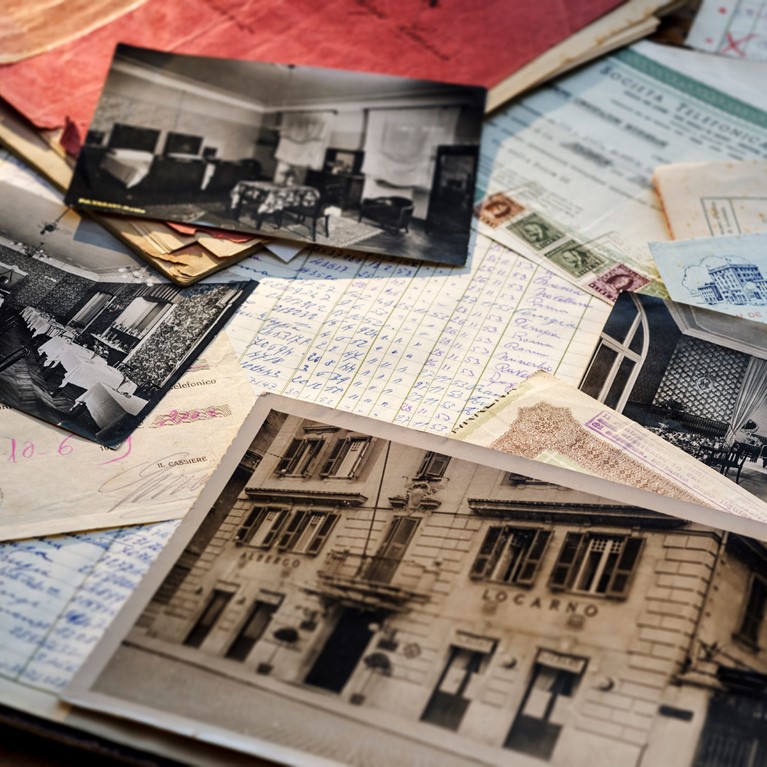-
Year 1925
If walls could talk, ours would have more than one century of intriguing tales to tell. The Hotel Locarno was inaugurated in 1925 as a refined 5-star hotel by the original Swiss owners who named it after their hometown. The famous illustrator Anselmo Ballester was entrusted for the advertising poster.
-
Year 1943
“Rome, Open City”: in September 1943 the Germans marched in and took over the city for nine months. Hotel Locarno was occupied by the nazis but, even in the saddest times, having gone through two world wars, the hotel has never closed its doors for a single day.
-
Year 1944
The Liberation: after Rome was freed from German occupation, American soldiers inhabited the post-war city and Hotel Locarno. Now the lobby was ‘occupied’ by the children of the neighborhood who used to come to the fireplace hall to play with the pinball machines and the football-tables of the Americans.
-
Year 1950
As Italy's post-war film industry flourished, the reputation of Rome's Cinecittà began attracting more and more Hollywood people, while Italian neorealism cinema gained International plaudits. Italian paparazzi soon became notorious and were chasing celebrities who gathered at the bar of Hotel Locarno.
-
Year 1960
“La Dolce Vita”. During the sixties the hotel played host to some of the city's most colorful characters of the the artistic village who animated the neighborhood. The nearby Rosati Bar and the famous Bulla brothers' lithography studio were the meeting place for groups of artists belonging to the "Piazza del Popolo School” artistic movement.
-
Year 1965
Federico Fellini and Giulietta Masina were among the habitué, usually sitting near the fireplace. In 1966 Jack Kerouac and Gregory Corso hardly found the way back to Hotel Locarno after an alcoholic night at Piazza del Popolo. Alberto Moravia and Elsa Morante, who were living close by, spent nights after nights at Locarno Bar.
-
Year 1970
Maria Teresa Celli, the new iconic owner of Hotel Locarno, decided to create something completely different. Her vision was to renovate the hotel bringing back to life the spirit of the '20s années folles. Artists like Basquiat and Borges still roamed our halls. Ms. Celli knew how to pull this gang of artists together while never tightening their freedom.
-
Year 1990
Ms. Celli bought the historical building next door, built in 1905 by a noble Venetian family. Through the years the Hotel has been the setting for movies, theatrical performances, book launchings and a source of inspiration for writers and artists. Bernard Weber's first film, Victor Cavallo's theatre play, Alain Elkann's and Antonio Mega Ferreira's books were all titled "Hotel Locarno".




